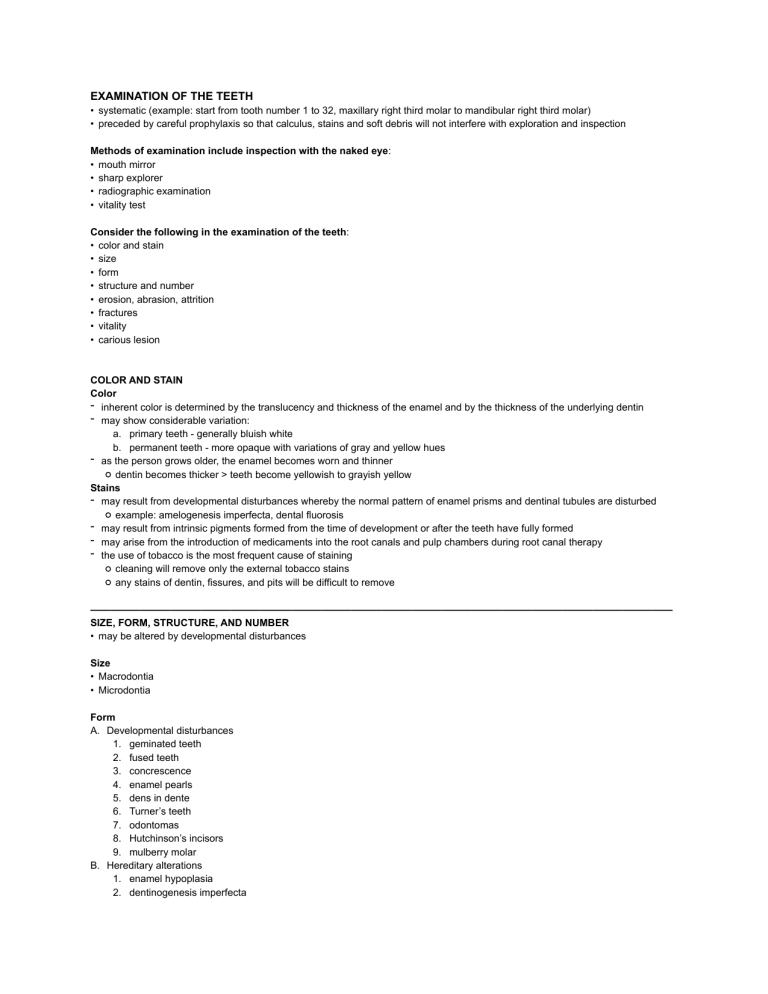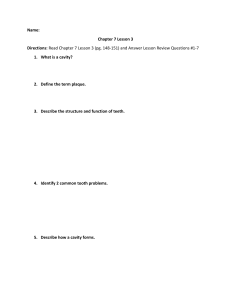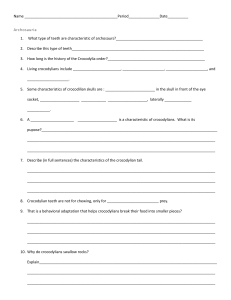
EXAMINATION OF THE TEETH • systematic (example: start from tooth number 1 to 32, maxillary right third molar to mandibular right third molar) • preceded by careful prophylaxis so that calculus, stains and soft debris will not interfere with exploration and inspection Methods of examination include inspection with the naked eye: • mouth mirror • sharp explorer • radiographic examination • vitality test Consider the following in the examination of the teeth: • color and stain • size • form • structure and number • erosion, abrasion, attrition • fractures • vitality • carious lesion COLOR AND STAIN Color - inherent color is determined by the translucency and thickness of the enamel and by the thickness of the underlying dentin - may show considerable variation: a. primary teeth - generally bluish white b. permanent teeth - more opaque with variations of gray and yellow hues - as the person grows older, the enamel becomes worn and thinner dentin becomes thicker > teeth become yellowish to grayish yellow Stains - may result from developmental disturbances whereby the normal pattern of enamel prisms and dentinal tubules are disturbed example: amelogenesis imperfecta, dental fluorosis - may result from intrinsic pigments formed from the time of development or after the teeth have fully formed - may arise from the introduction of medicaments into the root canals and pulp chambers during root canal therapy - the use of tobacco is the most frequent cause of staining cleaning will remove only the external tobacco stains any stains of dentin, fissures, and pits will be difficult to remove —————————————————————————————————————————————————————————— SIZE, FORM, STRUCTURE, AND NUMBER • may be altered by developmental disturbances Size • Macrodontia • Microdontia Form A. Developmental disturbances 1. geminated teeth 2. fused teeth 3. concrescence 4. enamel pearls 5. dens in dente 6. Turner’s teeth 7. odontomas 8. Hutchinson’s incisors 9. mulberry molar B. Hereditary alterations 1. enamel hypoplasia 2. dentinogenesis imperfecta 3. dentin dysplasia 4. amelogenesis imperfecta Number A. Anodontia 5. Complete 6. Partial - maxillary lateral incisors - most commonly impacted - mamdbular second premolars - second most commonly impacted - congenital absence is an important consideration in orthodontic treatment and pace management B. Supernumerary teeth - refers to an increase in the normal number of teeth present in the dentition - may interfere with normal eruption —————————————————————————————————————————————————————————— EROSION, ABRASION, ATTRITION, AND FRACTURES Erosion - results from a chemical process and the defects are usually limited to the labial and buccal surfaces of the teeth - defects may vary in shape from saucer-like depressions to deep wedge-like grooves Abrasion - refers to the mechanical wearing of the tooth structure by physical agents such as toothbrushes, abrasive powders - may affect any hard dental surface Fractures - may involve both crowns and roots - coronal fractures are obvious - root fractures require radiographic evaluation - factors to consider in evaluating fractures: 1. presence of direct pulpal involvement 2. pulpal involvement secondary to injury to the apex - pulp testing immediately after a fracture is not recommended because most fractured teeth are hypersensitive to electric stimulation —————————————————————————————————————————————————————————— VITALITY - questionable teeth should be examined for vitality based on: patient’s history clinical examination of the teeth radiographic signs of disease —————————————————————————————————————————————————————————— CARIOUS LESION - the examiner should remove any debris and dry the teeth before attempting to examine them for carious lesions 3. examination begins with a specific tooth and proceeds systematically throughout the arches all surfaces of the tooth examined completely before proceeding to the next tooth 4. examination of the proximal surfaces difficult use of explorers and radiographs periodic examination is indicated for all individuals new carious lesions may develop within 6 months factors initiating dental caries: a. exposure of cementum b. improper extension of restorations c. malposed teeth - areas where carious lesions frequently develop: 5. pits and fissures 6. developmental grooves of the occlusal surfaces of teeth 7. interproximal surfaces - areas less commonly affected: 1. labial 2. buccal 3. lingual surfaces —————————————————————————————————————————————————————————— CONTACT RELATIONSHIP - dental floss is used to determine the tightness of contact areas throughout the mouth - make use of suitable dental floss to permit adequate evaluation of the proper contact relationship - requirements: thin, round unwaxed nylon should pass through the area without being torn or shredded tearing or shredding of floss is indicative of dental caries or overhanging restoration - improper contact relationship: indicated when the floss is easily pulled through the contact area gingival tissues show evidence of food impaction —————————————————————————————————————————————————————————— GAIT - manner of walking of a person may suggest an existing or previous medical condition








